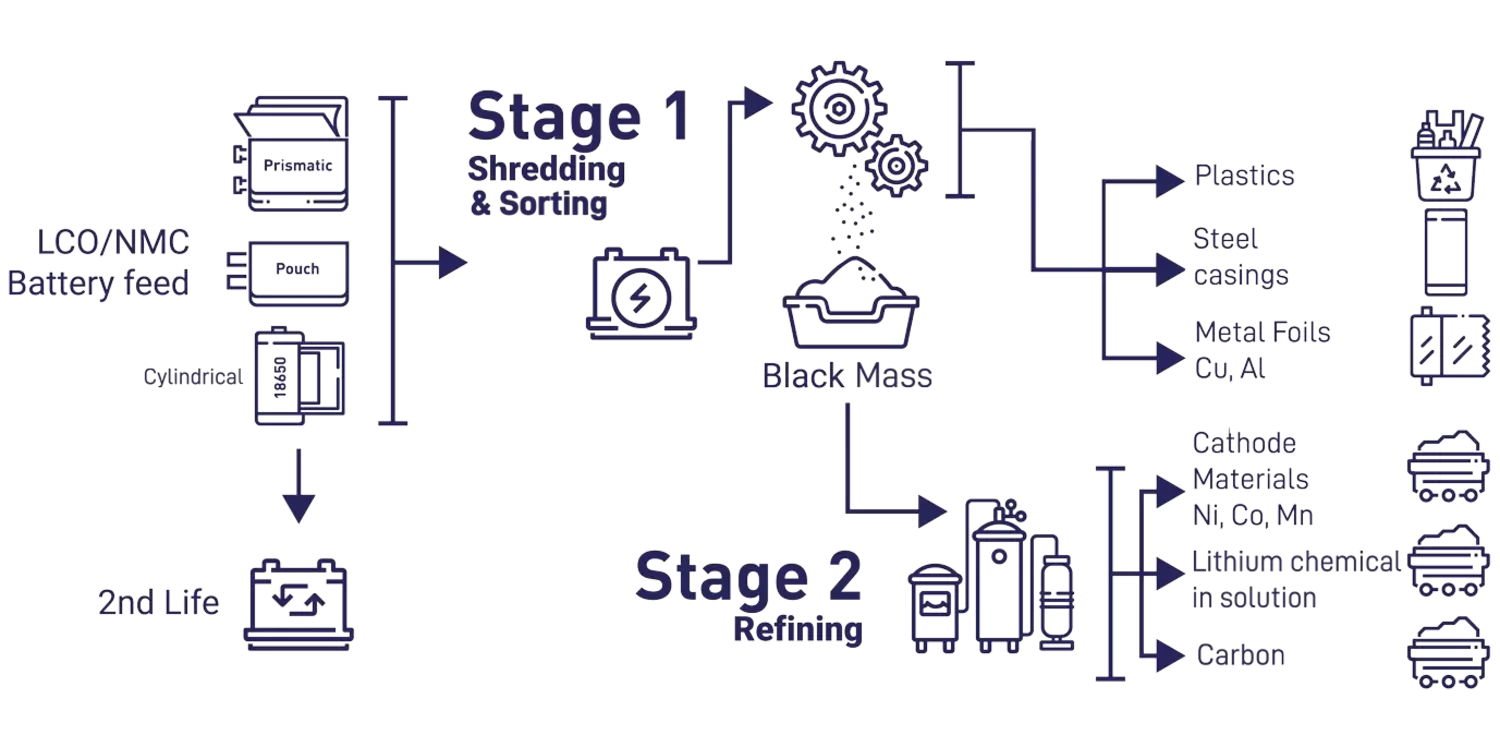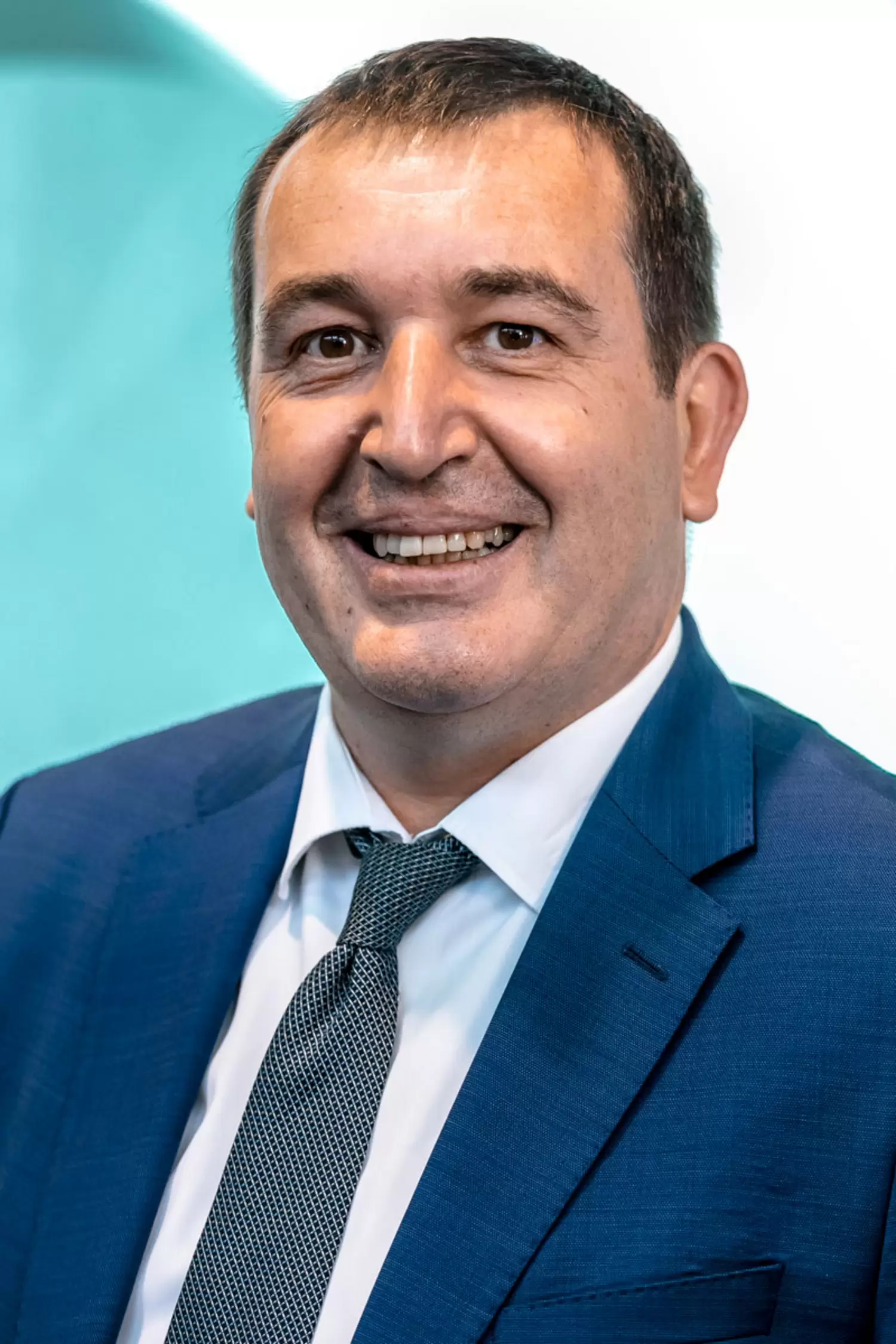Sustainable Recycling Solution for Lithium-Ion Batteries
Primobius is developing a sustainable recycling solution that targets the recovery of battery materials that are contained in production scrap and end-of-life lithium-ion batteries (LIBs), materials that might otherwise be disposed of in landfill or processed in high-emission pyrometallurgical recovery circuits. The Primobius’ process flowsheet targets the recovery of valuable materials from consumer electronic batteries (devices with lithium cobalt oxide (LCO) cathodes), and nickel‐rich EV and stationary storage battery chemistries (lithium‐nickel-manganese‐cobalt (NMC) cathodes). The LIB Recycling Technology is designed to recover cobalt, nickel, lithium, copper, iron, aluminium, carbon, plastics and manganese into saleable products that can be reused in the battery supply chain.
Process Technology
Recycling of cell production scrap and end-of-life lithium-ion-batteries
Our sustainable hydrometallurgical approach represents an extremely safe method of extracting metals at ordinary temperature with recirculating liquid solvents to bring high-purity chemicals back into the battery supply chain. Today’s incumbent ‘pyrometallurgical’ approach can be seen as a sunset technology for recycling while hydrometallurgical recycling is the sunrise approach, poised to do the heavy lifting to reduce the current high carbon footprint of LIBs.
The LIB Recycling Technology comprises two stages:
- Shredding and beneficiation to physically separate components and remove metal casings, electrode foils and plastics from the main battery materials (“Shredding and Sorting”); and
- Leaching, purification and precipitation to predominantly produce refined chemical products via the hydrometallurgical processing facility (“Refining”).
The LIB Recycling Technology was successfully tested in a pilot trial at SGS Lakefield, Canada. The Pilot Trial achieved a total mass recovery of new products from feed equaling approximately 85%. Further, nickel and cobalt sulphate solids were produced at specifications suitable for use in cathode production. Primobius aims to use its demonstrarion plant learnings to optimize the LIB Recycling Technology and recovery rates up to 95% of the battery mass.
-
Feed preparation
As a first step (Stage 1), the plant shreds spent batteries of different sizes and types, then sorts the plastic and metal components from the so-called "black mass". The two-stage shredding process is followed by drying and beneficiation to separate coarse metal and plastic materials from feed for processing in the hydrometallurgical section of the plant. These materials are drummed for sale as scrap to existing metal and plastic recyclers. The process can safely shred individual cells without requiring prior discharge owing to its multiple safety systems which include wet shredding and an inert gas shrouded environment to manage fire risk.
Primobius anticipates situations where modules may need to be disassembled into constituent cells. Where this is not the case, modules may need to be discharged to a specified maximum level to limit the aggregate contained power before they are shredded. The dimensions of each format and state of charge post receival to plant will influence the requirement.
The black mass product from Stage 1 contains the active materials for the operation of batteries. During the following hydrometallurgical processes, it is possible to extract from these active materials lithium, nickel and cobalt in a suitable form for reuse in making battery cathode materials.
![]()
-
Hydrometallurgical refining
The feed to Stage 2 (black mass) is processed in the leach circuit to extract cobalt, nickel, manganese copper and lithium. The pregnant leach solution (PLS) is separated from the solid leach residue. Further purification of PLS results in the recovery of cobalt and nickel as high purity sulphates suitable for potential sale directly back into the LiB supply chain. The recovery of lithium as a sulphate will enable its conversion to either lithium hydroxide or lithium carbonate and re-use in batteries.
The manganese and copper sulphates are saleable to existing refineries of these metals or for direct industrial use. The solid leach residue contains the graphite anode material which will be dried and drummed for sale. The final product is a liquid ammonium sulphate solution, which will be concentrated and crystallised for sale into the fertiliser market.
![]()
-
Graphical summary
![]()
Safety measures
Safe for society and the environment
In Primobius' flexible and robust technology safety has the highest priority. During the process risks are always addressed right from the beginning. Old batteries are handled responsibly to prevent fires and the release of hazardous substances.
- If needed batteries are first discharged in a controlled manner to minimize the residual energy
- A wet shredding process is used to reduce the risk of fire hazard
- Our fire detection and anti-fire system controls potential fires directly by flooding enclosed system parts with CO2
- Used battery inventory is stored in safety boxes with fire protection, sealing and filter system
- A combined state-of-the art off-gas system with filtering and wet scrubbing protects environment from volatile organic compounds and dust
- Our water treatment system ensures the saving of resources and waste-water-free operation
Downloads
Contact
Have a question or would like to collaborate? Get in touch now.
-
Horst Krenn
-
Horst Krenn
Managing Director
https://www.primobius.comPrimobius GmbH
Wiesenstraße 30
57271 Hilchenbach
Germany![]()




